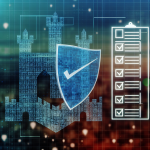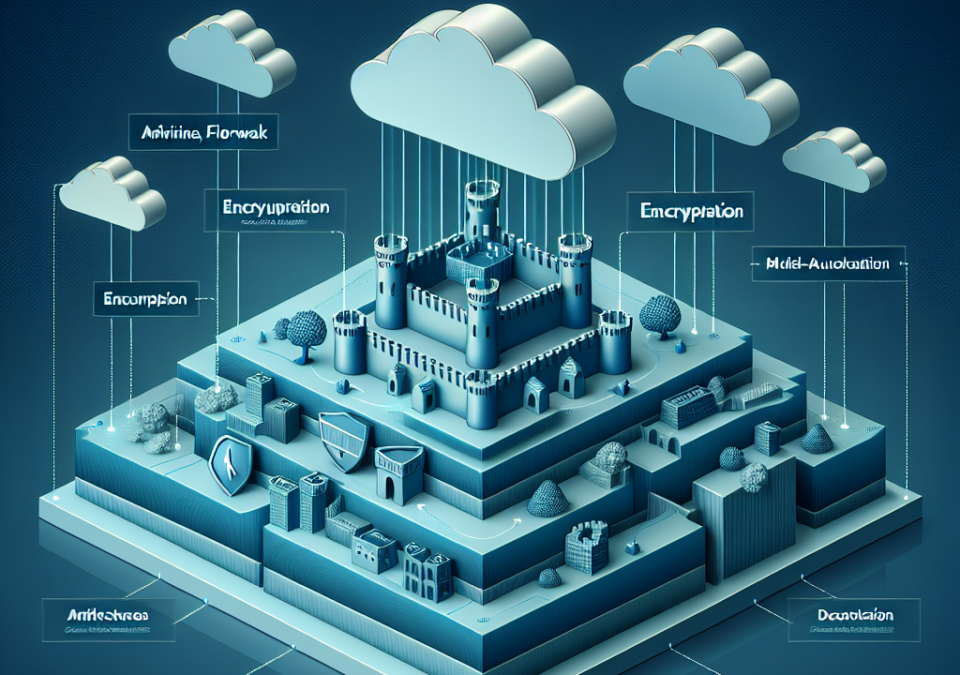
Building a Strong Defense: The Role of Compliance in Cybersecurity
July 7, 2025
How to Prepare for Your Next Security Compliance Audit: Best Practices
July 8, 2025
In today’s digital landscape, where data breaches and cyber threats are becoming increasingly sophisticated, a robust security strategy is indispensable for organizations leveraging cloud infrastructure. One of the most effective approaches is the concept of Defense in Depth. This strategy entails multiple layers of security controls, ensuring that if one layer is breached, others stand ready to defend against potential threats.
What is Defense in Depth?
Defense in Depth is a cybersecurity strategy that requires layering various security measures to protect systems and data. Instead of relying on a single barrier, such as a firewall or antivirus software, Defense in Depth employs multiple safeguards, creating a more complex and less vulnerable environment. This multi-layered approach not only dilutes the effectiveness of any single vulnerability but also provides a more comprehensive defense against a wide range of threats.
Key Layers of Security in Cloud Infrastructure
1. Physical Security
Though the cloud may seem intangible, the physical servers hosting your data are located in data centers that require strong physical security measures. This includes:
- Controlled Access: Limited entrance to authorized personnel through biometric systems, key cards, or security guards.
- Environmental Controls: Climate control, fire suppression, and flood protection mechanisms to ensure the hardware’s operational integrity.
2. Network Security
Once data is in the cloud, protecting the networks through which it travels is vital. Key components of network security include:
- Firewalls: Virtual firewalls that monitor and control incoming and outgoing network traffic based on predetermined security rules.
- Intrusion Detection and Prevention Systems (IDPS): Solutions that monitor network activities and take action against suspicious patterns.
- Virtual Private Networks (VPNs): Encrypting data during transmission, ensuring secure, private communication over public networks.
3. Data Security
Securing data itself is critical. This involves both protecting data at rest and in transit:
- Encryption: Both data at rest (stored data) and data in transit (data being transferred) should be encrypted using strong algorithms.
- Access Controls: Implementing role-based access control (RBAC) to ensure only authorized individuals can access sensitive data.
- Data Masking and Tokenization: Techniques used to protect sensitive information while allowing for its necessary use in a secure environment.
4. Application Security
In a cloud setting, applications often become prime targets for attackers. Employing security measures at the application layer is essential:
- Secure Development Practices: Including threat modeling and secure coding techniques during the development lifecycle to identify and mitigate vulnerabilities.
- Web Application Firewalls (WAF): Protecting web applications by filtering and monitoring HTTP traffic to and from a web service.
- Regular Updates and Patch Management: Ensuring that applications are always running the latest versions can help mitigate known vulnerabilities.
5. Identity and Access Management (IAM)
Ensuring that only the right people have access to the right resources is crucial. Effective IAM practices can include:
- Multi-Factor Authentication (MFA): Adding extra layers of security beyond usernames and passwords.
- Single Sign-On (SSO): Simplifying access while maintaining security by allowing users to authenticate once and gain access to multiple applications.
- Privilege Management: Regularly reviewing and restricting user privileges to the minimum necessary for their roles.
6. Monitoring and Incident Response
No security measure is infallible; therefore, ongoing monitoring and a robust incident response plan are essential:
- Continuous Monitoring: Real-time analysis of logs and intrusion detection to identify anomalies and potential threats.
- Incident Response Plan: Establishing and regularly updating a response plan that includes predefined roles and responsibilities in the event of a security breach.
7. Training and Awareness
Human error is often the weakest link in security. Regular training and awareness programs can significantly enhance the security posture of an organization:
- Phishing Awareness Training: Educating employees about recognizing and reporting suspicious activities.
- Security Best Practices: Regular updates on the latest security protocols and best practices for cloud usage.
Conclusion
Implementing a Defense in Depth strategy is not just about layering different security measures but ensuring they work cohesively to bolster your cloud infrastructure against attacks. By understanding and addressing vulnerabilities across multiple layers—from physical security to employee training—organizations can create a security architecture that is resilient, adaptive, and proactive. As cloud technology continues to evolve, embracing these layered defenses will be crucial for safeguarding sensitive data and maintaining trust in today’s digital economy.







